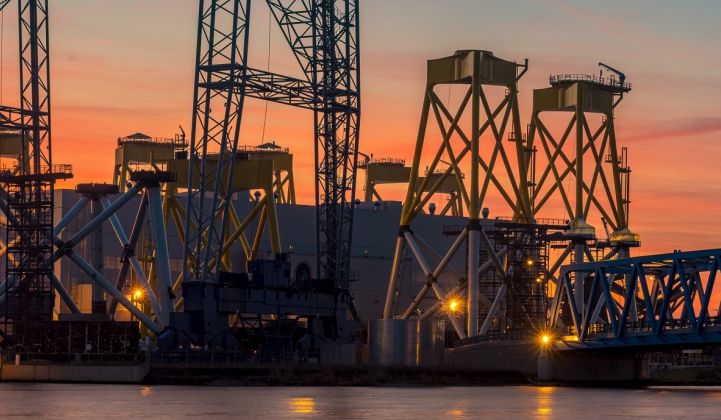With New York perhaps just days away from announcing the winners of its first offshore wind solicitation, and New Jersey not far behind it, the U.S. stands at the cusp of a wave of offshore wind supply chain announcements, experts say.
The supply chain picture will become “much clearer in the next two to three months,” after the results from New Jersey and New York come in, said Thomas Brostrøm, president of North America for Ørsted, the world’s leading offshore wind developer.
“These are big markets and big solicitations,” Brostrøm told GTM. “I’ll be surprised if you don’t see some kind of announcements.”
With just five turbines spinning in its waters, the U.S. has seen little investment in its offshore wind supply chain to date. But several huge projects are set to enter construction over the next two years, including Vineyard Wind's 800-megawatt project off Massachusetts, meaning the speculation and behind-the-scenes maneuvering may soon give way to firm investment decisions for offshore wind factories and ports infrastructure.
Those early decisions could have a decades-long impact on where the jobs end up in what is expected to be one of the fastest-growing renewable energy sectors, both in the U.S. and globally. The sheer size of offshore wind components makes localization a critical element of cost reduction.
2018 was a landmark year for the emerging U.S. offshore wind market. In addition to Vineyard's contract with Massachusetts, Ørsted redrew the industry map with its acquisition of U.S.-leading developer Deepwater Wind, while the market saw the entrance of global heavyweights Shell New Energies, EDF and EDP Renewables.
Yet 2019 is already shaping up to be every bit as big.
New York state is expected to announce the winners of its inaugural offshore wind request for proposal — worth at least 800 megawatts, and perhaps substantially more — in the next week or two, ahead of a supply chain forum in New York City in early June. New Jersey will follow later this summer with the winners of its 1.1-gigawatt solicitation.
Meanwhile, Massachusetts will hold its second major offshore wind procurement this year, with bids due in August. And the market continues to gain momentum up and down the East Coast, with Maryland last week backing another 1,200 megawatts with a new law enacted under Republican Governor Larry Hogan.
Foundations, towers and blades
Certain pieces of the U.S. offshore wind supply chain have already come into focus.
Massachusetts made an early investment into the state-owned New Bedford Marine Commerce Terminal, set to act as the staging ground for Vineyard’s project. Maryland secured local-content commitments from developers seeking in-state subsidies, and Connecticut is channeling $93 million into New London's State Pier — with more than half the money to come from Ørsted and its partner Eversource, which plan to use the port for projects in New England.
Yet there are still more questions than answers regarding which components will be made on U.S. soil, which companies will make them, and where. New York, New Jersey, Maryland, Rhode Island and Virginia are all vying for a central role in the offshore wind supply chain.
“What you are seeing is a cluster emerging in the Northeast, and there will probably be a cluster emerging in the Mid-Atlantic,” Brostrøm said.
One component unlikely to be made in the U.S. in the near term are the turbine nacelles themselves, which will be imported from Europe. Outside of China, the market for offshore wind turbines is dominated by Siemens Gamesa and MHI Vestas, with Paris-based GE Renewable Energy investing heavily to catch up.
But many other major components — including foundations, towers and blades — are fair game for U.S. manufacturing, said Stephanie McClellan, a director at the Renewables Consulting Group and the author of a recent report on the supply chain published by the University of Delaware's Special Initiative on Offshore Wind.
There’s still enough uncertainty about the market to give some potential investors pause — opening an opportunity for players with a higher risk tolerance, McClellan said.
Even the most advanced U.S. projects are still waiting for their final permits from the federal government, which controls the seabed beyond state waters. “And there are some actors in the supply chain that will say, ‘I’d like to see a utility-scale project reach financial close before I make a decision,’” she said in an interview.
“I think you’re going to see some companies jump into that void and say, ‘OK, maybe some of the more established players — the European players — are still looking for more certainty in the market, so now’s the time to be speculative and gain market share.’”




